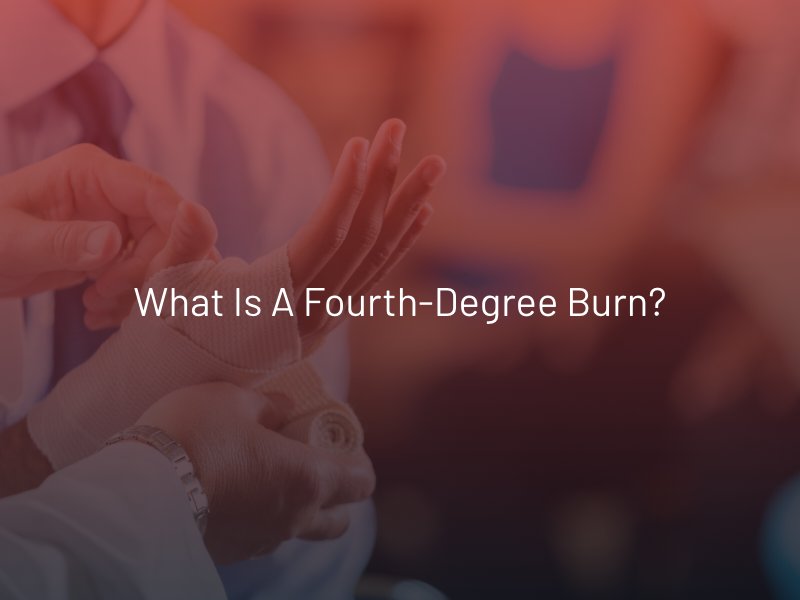What is a Fourth-Degree Burn?
Fourth-degree burns extend through the skin to injure muscle, ligaments, tendons, nerves, blood vessels, and bones. The major tissues of the skin and underlying layers are significantly damaged, and these burns always require medical treatment.

Symptoms
The burn area will be black in appearance, as the skin will be charred, and bone may be exposed. There is no feeling in the area since the nerve endings are destroyed. Eschar will develop as healing occurs, which is layers of dead skin and tissue like a scab that falls off gradually from the burn.
Should I Hire an Attorney for my Fourth-Degree Burns?
If you sustain a fourth-degree burn injury due to another person or company’s negligence, you may have a right to file a burn injury lawsuit against the at-fault party. You will be entitled to demand compensation from their insurer for your medical bills, loss of income, and pain and suffering.
An experienced burn injury attorney can help you hold the responsible party accountable. They will ensure you have a solid case and fight for a settlement or award that fully covers your medical bills and future care.
Common Causes of Fourth-Degree Burns
Fourth-degree burn injury claims are often pursued after motor vehicle accidents, work accidents, or explosions. However, common causes of fourth-degree burns can also be identified by the mechanism, such as a fire but also chemical burns, electrical burns, radiation burns, scalding, and friction burns.
Thermal or Scalding Burns
Fourth-degree burns from fire, boiling water, steam, or coming into contact with a heated object. Scalds from hot liquids are the most common source of burns in children, but for adults, thermal burns are most commonly caused by open flames.
Chemical Burns
A primary cause of fourth-degree burns is acids or other toxic chemicals. Chemicals can cause the most severe types of burns, all the way to the bone.
Electrical Burns
From electrical shocks or a burn from a hot electrified heating element. Electrical burns are more common on construction sites and in industrial settings.
Radiation Burns
From exposure to radiation, or commonly seen when someone has a severe sunburn from overexposure to the sun or a tanning element.
Friction Burns
Road rash is the most common type of friction burn but includes any burn caused by the skin coming into contact with some hard object.
Treatment
Surgical treatment is always necessary for a fourth-degree burn. The area may need to be grafted to close up the site and prevent infection, but sometimes a skin graft is not possible with this severity of burn. In many cases, it is impossible to repair the area or save the limb, but amputation may be necessary to save the patient’s life. Regardless of the treatment required, patients will typically experience significant impairments in daily living skills and need months to years of rehabilitation and therapy.
The likelihood of fatality resulting from a severe burn depends on the percentage of the body burned, the patient’s age, overall health, and other associated injuries. Death risks rise with the amount of the body that is burned, particularly in key areas like the head and chest. Older people are more likely than younger people to die as a result of a fourth-degree burn, and young children will require more fluid support and specialized treatment than adults.
How Our Lawyers Can Help
When you hire our Las Vegas personal injury lawyer, you can rest assured that we use our extensive resources to advocate for you to receive maximum compensation. We handle cases on a contingency fee basis. You will not owe a legal fee unless we obtain compensation for you through a settlement or court award. Call (702) 384-1414 today to schedule your free consultation.